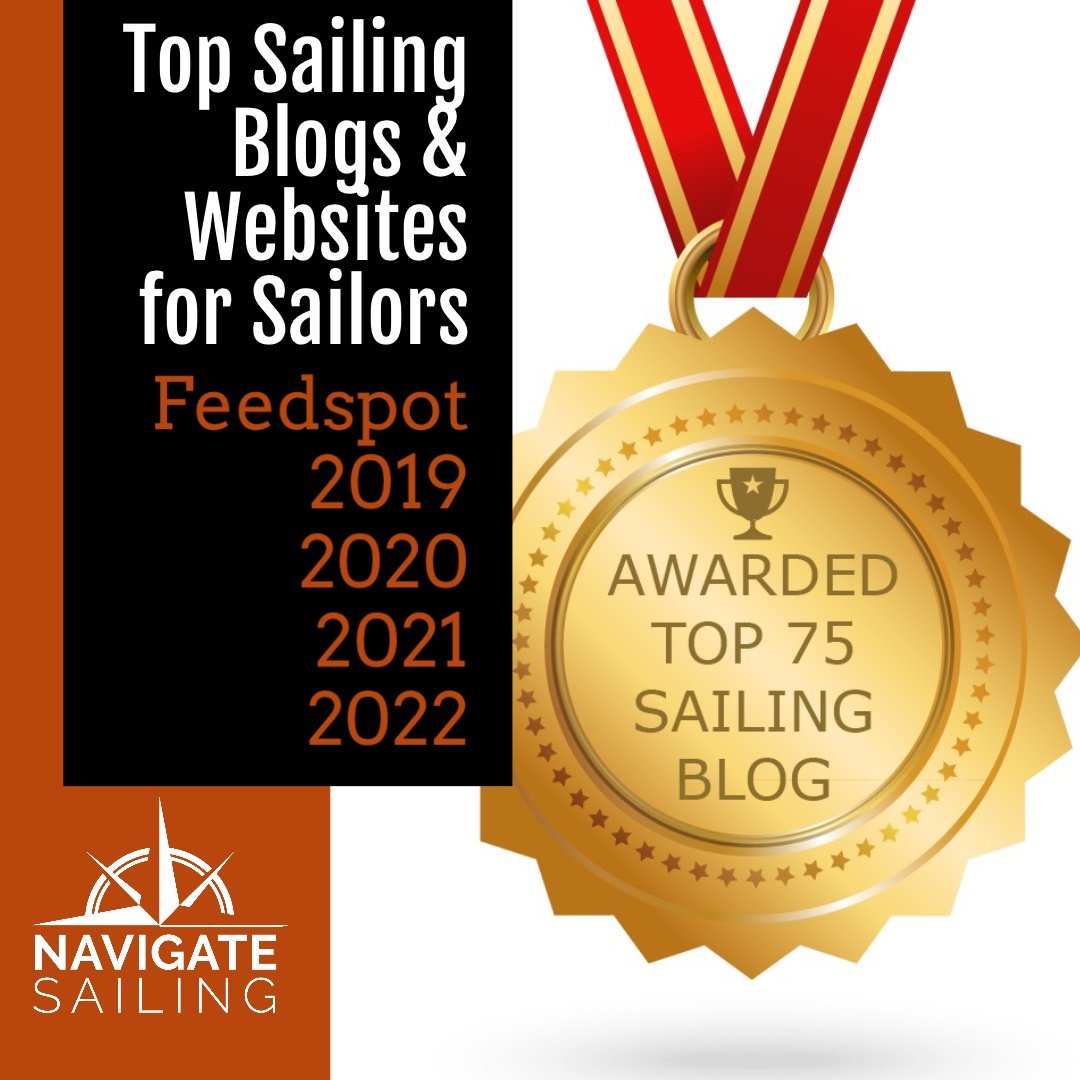What is the Bay of Biscay and Why is it Feared Among Sailors?— A Sailing Adventure Blog
/Some of the fiercest weather conditions of the Atlantic Ocean happen in the Bay of Biscay. It is home to large storms during the winter months, and there have been countless shipwrecks that have resulted from the gruesome weather.
By Michelle Segrest — How to Get Your Sea Legs
For sailors, the Bay of Biscay, otherwise known as “The Valley of Death,” is one of the most challenging and most feared bodies of water. Sailing across the Bay of Biscay was a sailing adventure that created challenges and struggles along with excitement and reward as we battled seasickness for four days and nights.
It was difficult, to say the least.
However, we were lucky. We had the best possible conditions we could hope for during the worst possible time of year to attempt a Bay of Biscay crossing (late September).
But even with favorable conditions, the Bay of Biscay is ruthless.
What is the Bay of Biscay? Why Does it Have Such a Bad Reputation
The most recommended time to cross the Bay of Biscay is early summer. The least recommended time is in the fall and early winter, starting with the early Equinox at end of August to the end of September. This is when the hurricanes in the Caribbean move Northeast and become depressions and hit the Bay of Biscay, bringing with them a high swell traveling thousands of miles across the Atlantic.
When they hit the continental shelf and the seabed raises about 5,000 meters to only 100 meters, those long swells get steep and create breaking seas that are very feared among sailors.
Throughout a year-long worldwide sailing journey that took us to more than 15 countries on four continents and included an Atlantic Ocean crossing, this was the one passage that I feared the most. At the same time, I was excited about it because it’s such a great challenge.
The Bay of Biscay is a gulf located in the Celtic Sea of the northwest Atlantic Ocean between the northern coast of Spain and the western coast of France. The average depth is 1,745 meters and the maximum depth is 4,890 meters. There are also many dangerous shallow areas.
Some of the fiercest weather conditions of the Atlantic Ocean happen in the Bay of Biscay. It is home to large storms during the winter months, and there have been countless shipwrecks that have resulted from the gruesome weather. Depressions enter the Bay from the West. They dry out and then are born again as thunderstorms that look like hurricanes and crash into the Bay. When the wind and waves come in from different directions, they can collide and create confused water inside the Bay.
Many sailors describe this as like being inside a washing machine.
Huge Atlantic swells can form near the coast, making many ports inaccessible. Because of the extreme weather in the winter, there are abnormally high waves at times.
The Bay of Biscay has been feared by seamen dating back to the beginning of the second World War when German U-boats ruled the area and many American and British ships sank in her waters.
Getting Mentally Ready for a Bay of Biscay Sailing Passage
There are seasoned sailors who might ask us, “What’s the big deal? You sailed the Bay of Biscay with favorable conditions.” This is true, however, for a novice sailor, this was a monumental accomplishment. It was torture at times, but it was also beautiful and magnificent and magical to be sailing this infamous body of water.
We now know first-hand why The Bay of Biscay has such a bad reputation and why it is feared among sailors worldwide and throughout history.
The worst possible wind direction to cross the Bay of Biscay from the North to the South is Southwest because this is what brings the heaviest storms and the heaviest seas into the Bay of Biscay—which makes this one of the most challenging bodies of water.
We were waiting for easterly or northerly winds which would allow us a straight course to A Caruna Spain. The seas would be coming from the continental shelf to the deep sea rather than the deep sea into the continental shelf.
A Bay of Biscay Passage is Never Easy
At times, it was a glorious passage filled with playful dolphins, a whale sighting, a full moon lighting our way each night, and bright sunny weather. At other times, the constant pounding of the 3-to-4 meter waves rocked our bodies and our minds.
We departed with calm waters into the Celtic Sea and enjoyed a huge school of dolphins that played with us for a while. But the calm, relaxing atmosphere did not last long. At one point, I asked the skipper, “When will we be in the Bay of Biscay?”
His response. . . “You’ll know it when we get there.”
As predicted, soon the boat began to rock as the waves got higher and the wind was more forceful. I couldn’t help but think about the fact that there are ships much larger than ours sitting at the bottom of the Bay of Biscay. Don’t think for a second that wasn’t on my mind.
When we entered the Bay of Biscay, we knew it. Things began to get uncomfortable immediately.
After about 12 hours of constant pounding of the waves and the never-ending rocking and rolling, the Bay of Biscay got the best of me, and I began suffering badly from the effects of seasickness. So did the skipper.
We had a 6 to 7 bf for more than 40 straight hours, which was tough on both of us. We both suffered severe seasickness, dehydration and exhaustion. I made a decision that I would show up for every shift, no matter how badly I felt. With only a two-person crew, we must find a way to function no matter how challenging the conditions.
After three days and nights of constant heavy waves and battling the harsh effects of seasickness, we finally saw land.
Bay of Biscay Sailing Challenges Continue
We were so relieved to make landfall, and all of a sudden the conditions calmed. A few hours later, however, there was zero visibility so we had a challenge of another kind. We saw a freighter in the distance and all of a sudden, the huge ship disappeared behind a curtain of fog. A few minutes later we were inside that same curtain of fog. It was difficult to see the bow from stern.
We were about six hours from A Caruna. We gave sound signals and hoped that most of the other ships had AIS so they could see us. We pushed through, and after two or three hours of thick fog, it finally cleared.
We battled seasickness, exhaustion, and dehydration, but we made it 362 nautical miles in 80 hours to A Caruña. I learned that the body can do crazy things to you, but the mind is stronger than the body. If you want to do something badly enough, you can do it!
Tell me about your experience sailing in the Bay of Biscay.
“Twenty years from now you will be more disappointed by the things that you didn’t do than by the ones you did do. So throw off the bowlines. Sail away from the safe harbor. Catch the trade winds in your sails. Explore. Dream. Discover.” – Mark Twain
If you like this sailing adventure blog about the Bay of Biscay, please PIN IT!
This page contains affiliate links. If you click on the product links and make a purchase, it allows me to make a small commission at no extra cost to you! Thank you for your support and I hope you find value in this content!

























